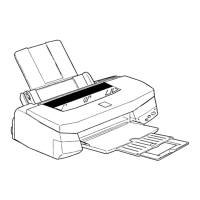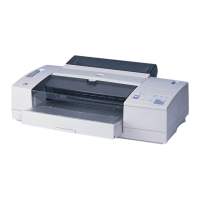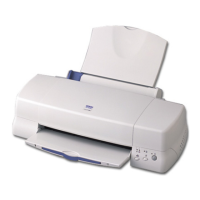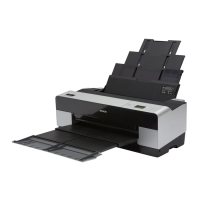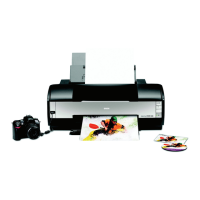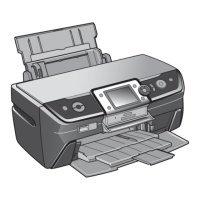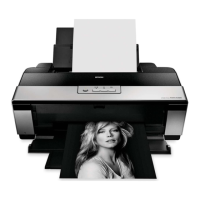EPSON Stylus COLOR 440, 640, and 740 Chapter 2 Operating Principles
42
Automatic Sheet Feeder (ASF)
When the user sets a stack of paper in the printer, it rests on top of the
upper led
e of the
pad
, shown in Fi
ure 2-8. The stack remains on the
pad while individual sheets are fed into the paper path. Sometimes,
however, more than one sheet of paper slips into the paper path durin
printin
. If this is not corrected, it can cause paper to
am when the
printer tries to load the next sheet of paper. To prevent this, the PF
motor rotates backwards at the be
innin
of each paper feed c
cle.
This causes the cam to rotate counterclockwise, catch the paper return
lever, and lift it upward, as shown in the fi
ure at ri
ht. At the same
time, the hopper and the pad are pushed backwards, awa
from the D-
cut paper loadin
roller, leavin
a
ap to prevent friction with the paper.
As the cam continues to rotate, an
paper that has slipped into the
paper path is cau
ht b
the return lever and returned to its proper
position on top of the pad.
When the PF motor resumes normal forward motion, the cam and the
D-cut roller rotate clockwise, allowin
the paper return lever to move
downward and clear the paper path. At the same time, the hopper and
the pad move forward and press the paper a
ainst the D-cut roller. As
the D-cut roller continues to turn, it draws the top sheet of paper off the
stack and feeds it into the printer, until the roller has turned so that its
flat side is parallel to the paper. At this point, the paper is full
loaded
and onl
the paper pinch roller remains in contact with the paper. This
is the ASF’s home position. A sensor detects this position and causes
the printer to disen
a
e power from the ASF.
Figure 2-8. ASF Unit Operation
Paper R eturn
Lever
Pad Spring
H opper Spring
H opper
Pinch R oller
D-Cut Roller Cam
Pad
Paper Stack
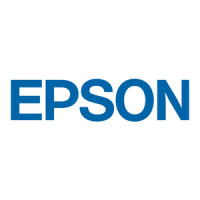
